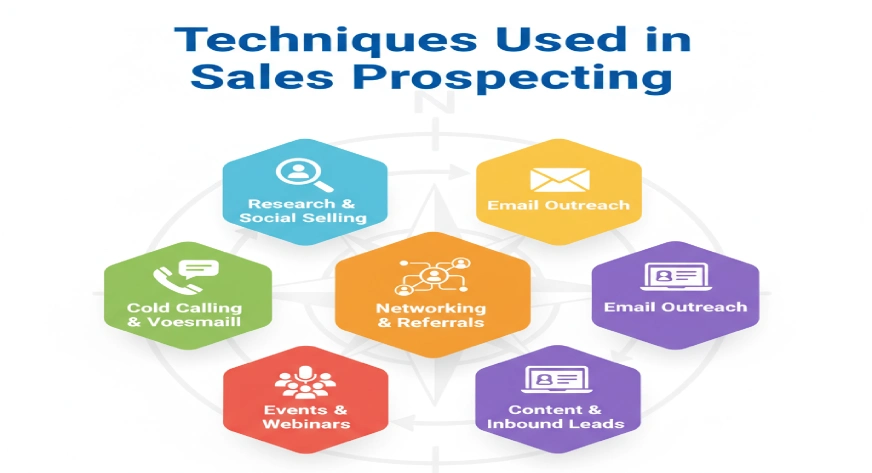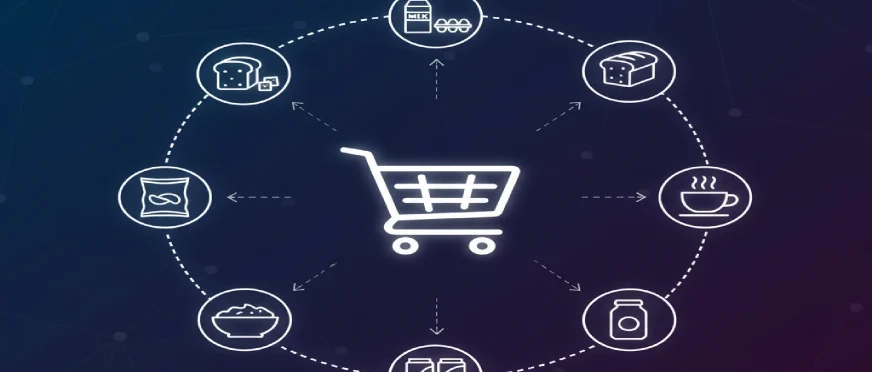Sales prospecting is the process of identifying and reaching out to potential customers (prospects) who are likely to be interested in your product or service. It’s the first step in the sales process where salespeople find, qualify, and connect with leads to turn them into paying customers.
In this guide, we’ll explore what sales prospecting is, why it matters, the techniques used, and best practices to help your business grow steadily.
Understanding Sales Prospecting
At its core, sales prospecting is about finding the right people to talk to. It’s not just about contacting everyone, it’s about reaching out to people who have a genuine need for what you offer.
Example:
A company selling project management software doesn’t randomly email all businesses. Instead, they target startups with remote teams that need better collaboration tools. By focusing on qualified prospects, they save time and increase their chances of closing deals.
Why Is Sales Prospecting Important?
Keeps Your Pipeline Full
Without a continuous flow of prospects, your sales team may run out of leads. Prospecting ensures there are always potential customers to reach out to.
Saves Time and Resources
Instead of contacting unqualified leads, prospecting helps you focus on people who are likely to buy. This makes your sales process more efficient.
Improves Conversion Rates
When you engage the right audience, your chances of turning them into customers increase. Targeted outreach often leads to higher response rates and more closed deals.
Supports Business Growth
Consistent prospecting creates a steady stream of opportunities. This predictability helps businesses plan better and scale operations.
Example:
A marketing agency targeting e-commerce brands that recently launched new products can tailor their pitch to show immediate value. This makes their prospecting efforts more effective than sending generic emails.
Techniques Used in Sales Prospecting

Cold Calling
Reaching out to potential clients via phone calls is one of the oldest methods. It works best when you have a well-researched list of prospects and a clear pitch.
Email Prospecting
Sending personalized emails to potential leads is highly effective. Include specific details about their business and how your solution can help.
Social Selling
Using platforms like LinkedIn to connect with potential customers, share valuable content, and engage in conversations. Social selling builds trust before pitching.
Networking Events
Attending conferences, webinars, or local business events helps you meet prospects face-to-face and establish personal connections.
Example:
A SaaS company might use LinkedIn to identify managers in companies with growing remote teams. They can then connect, share relevant content, and eventually pitch their software in a way that feels natural.
Real-Life Example of Sales Prospecting Success
Let’s look at a real-world example to see how sales prospecting can transform results.
A B2B software company, offering workflow automation tools, initially relied on mass email campaigns. They sent generic emails to thousands of businesses without much research. As expected, the engagement was low—few opened the emails, even fewer responded, and conversions were minimal.
To improve, they implemented a targeted sales prospecting strategy:
Also Read, How To Analyze Email Marketing KPIs for Better Campaigns
Identifying the Right Audience
Instead of emailing everyone, they focused on companies with growing remote teams that struggled with task management. This ensured they were reaching prospects with a genuine need.
Personalized Outreach
Every email mentioned the prospect’s company by name and referenced specific challenges they might face.
Multi-Channel Approach
They combined email outreach with LinkedIn engagement. After sending a personalized email, the sales reps connected with prospects on LinkedIn, shared helpful content, and started meaningful conversations before pitching the product.
Consistent Follow-Ups
Prospects who didn’t respond immediately were gently followed up with additional insights or case studies, keeping the brand on their radar without being pushy.
Results:
- Response rates increased by 40%
- Lead-to-customer conversions improved by 20%
- The sales team spent less time on unqualified leads and more time nurturing high-potential prospects
This example clearly shows that strategic sales prospecting, focused, personalized, and consistent, can significantly boost results. By understanding your audience and tailoring your approach, you’re not just reaching people you’re reaching the right people, at the right time, in the right way.
Wrapping Up
Understanding what is sales prospecting and practicing it consistently can dramatically improve your sales performance. By targeting the right audience, using multiple channels, and personalizing every interaction, businesses can build a strong pipeline, save time, and achieve better conversion rates.
Whether you’re a small startup or an established business, integrating prospecting into your sales process is key to predictable and sustainable growth.
Managing your sales and marketing efforts efficiently can be challenging. Webworks Co. offers digital marketing support that complements your prospecting efforts, helping you reach the right audience, engage leads effectively, and convert them into loyal customers without adding extra complexity.




